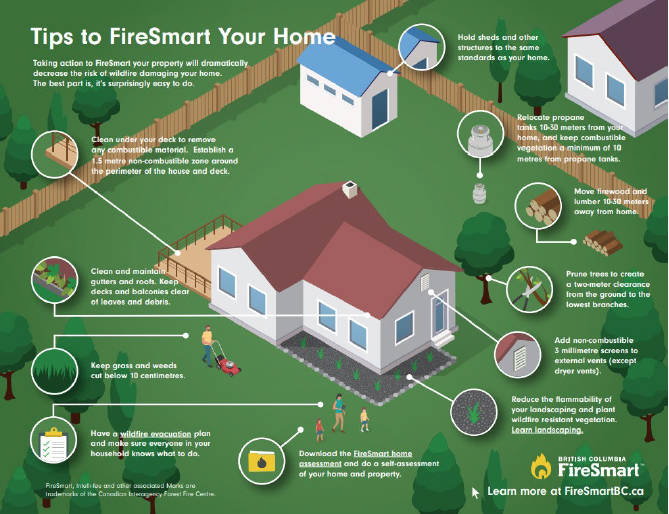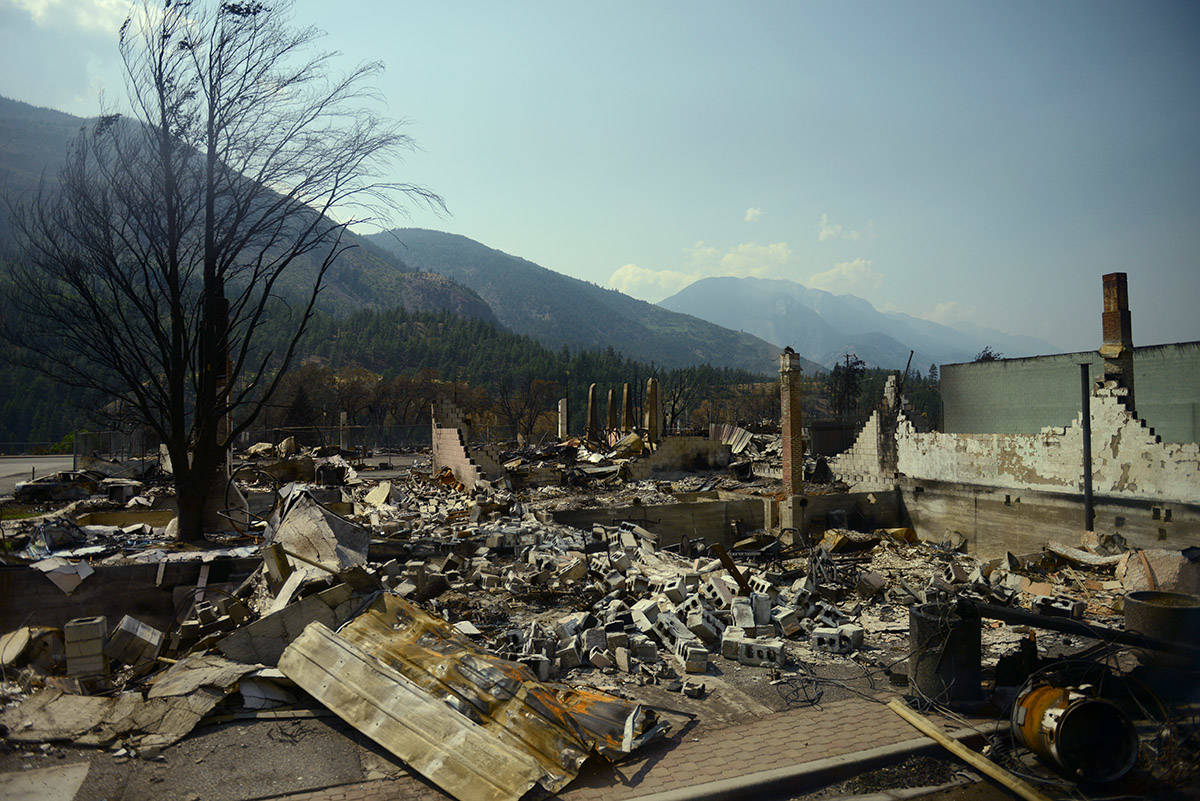As September rolled into the eastern Fraser Valley, so too did cooler temperatures and rain, both of which were needed to help suppress the countless wildfires that burned haphazardly across the province this summer.
Unfortunately, rain and weather won’t prevent similar-sized fires from sparking up again, nor will they save you if a fire is burning your way.
And after the province watched in horror as the town of Lytton was charred beyond recognition with only 23 minutes warning at the start of summer, several Hope residents reached out to The Hope Standard with questions and concerns regarding the community’s preparedness for protecting against life-altering forest fires.
“The emergency plan for the District of Hope is not a response plan for residents,” explained Tom DeSory, Hope’s fire chief. “It’s a large document that guides decision-making during an emergency or disaster. It outlines the way (the district is) supposed to set up things, so that anyone (reading the document) can be guided into decision-making options (for the district as a whole).”
At its core, the district’s fire and emergency preparedness plan(s) is just one item in the district tool belt for helping prevent and deal with the unexpected, says DeSorcy.
“The community wildfire plan is a risk assessment of (our) community to judge the risk of wildfires coming into the community, and the things we can do to mitigate the risk of that happening. It’s about making us resilient.”
But the district can only advance these issues on its own land: landowners are responsible for taking care of issues on their own properties.
The sort of emergency planning that’s done at a district level is done by consultants with experience across a breadth of natural and unnatural disasters, allowing them to think way outside the box and come up with contingencies and ideas that the average homeowner/resident doesn’t have to think about.
“It’s about being proactive instead of reactive,” continues DeSorcy. “These plans aren’t there for (resident) response, they’re there to tell (officials) where the problems are and the steps to take to prevent the risks.
“We have these plans for many things, like river flooding levels. There are all sorts of things we need to be prepared for.”
READ MORE: From smoke to devastation: 23 minutes in Lytton
At a personal level, DeSorcy says the first person who will be able to come to your aid during an emergency is you. “The number one person who needs to take care of them is themselves.
“Every home (is different, and should therefore) have its own fire escape plan that’s proactive in that your entire family will know what they should do in case of a fire. That’s the sort of planning you should be doing. Are you prepared to leave your home in the next 20 minutes (like in Lytton)?”
But because every family and every home has a different set of circumstances, nobody can plan for exactly what they’ll need to take because it’s all dependent on one’s circumstances.
There’s no point in telling “people where the (emergency) reception centre is going to be in advance because those decisions are made during the circumstance,” when officials know what they’re dealing with, DeSorcy added. “We can’t say it’s going to be at the Rec Centre, and then have that facility unavailable—what then?”
During the hot, dry summer months, several residents in the Hope area reached out to The Standard wanting to know what the district was going to do to prevent the area becoming the next Lytton.
However, the focus on that, says DeSorcy, is really just diverting personal-safety-responsibility from residents onto the district, which doesn’t help anyone.
“Now is the time to get on the internet, go to the website Get Prepared, prepare your grab bag. Those are the things you should be doing to prepare for emergency preparedness. Think of what you would take if you needed to leave right now. Do you have the meds you need? A full tank of gas? What would you pack into your vehicle? I can’t tell you the answers because I don’t know what you need. Just don’t over think it.”
As for the community emergency plans, DeSorcy is emphatic that their contents would be largely irrelevant to homeowners and town residents alike.
“An emergency plan in every community is simply a tool for the emergency operation centre to inform next steps in an emergency or disaster. It’s really stuff the average (person) doesn’t need to have.” For example, DeSorcy lists a few of the things districts need to take into account versus that of the typical homeowner: like storing a large quantity of dead bodies during the summer; or how to deal with an ice storm that takes out the power and closes roads, limiting the community’s ability to restock its shelves, or reach proper medical treatment.
“The plans tell us what to do, and when the time comes for us to tell you something, you will be advised appropriately (because of these plans),” said DeSorcy.
And Hope’s plan, says DeSorcy, is the same as every other community’s plan: “It’s the same format, same style, but it’s there for decision-making (steps) specific to Hope.
“For example, (could) Hope experience (what Lytton experienced)? Probably more minimized with our environment and climate, but anything’s possible. And no amount of planning is going to change what happened (in Lytton), you can’t predict that, so you can’t fully plan for it either.
“What we can do is have contingency plans,” the fire chief continued. “These are the things that we can train and plan for, but still, we have to plan for the unexpected” at a much larger scale than the average family.
Could Hope be at risk of a tornado? Not likely, says DeSorcy; but an ice storm? Certainly.
No matter the event, “I think we’re ready for (national-level-size) disasters. Our plans are organized and make for seamless transitions of staff to other EOCs. This stuff was put in place for a reason: we’ve got the right people in the right places to do the right jobs.”
So, for Hopians looking to be prepared for anything, DeSorcy says it’s not the district’s plans they need, but their own. You need to consider your survival needs, things that may be helpful (cash), or sentimental (mementos), but only you know what you have and what you need.
The most important thing people can do ahead of time, repeats DeSorcy, is to do their own research and take responsibility for themselves, their homes, and their families. For everything else, the district has its bases covered.
“We have an obligation to instruct residents on how to evacuate during an emergency, (and with our plans in place), it’s (hopefully) done in a very orderly fashion,” and with everyone’s safety protected.
@SarahGawdinSarah.Gawdin@hopestandard.comLike us on Facebook and follow us on Twitter.
Want to support local journalism during the pandemic? Make a donation here.


